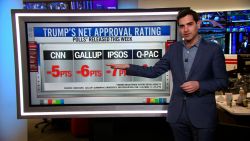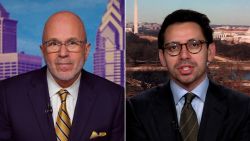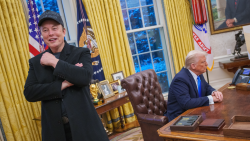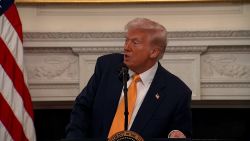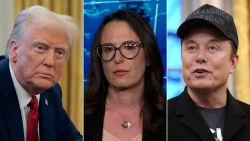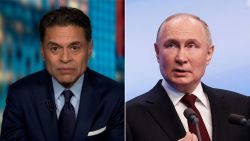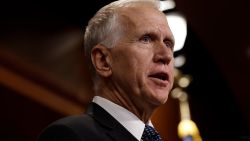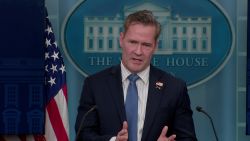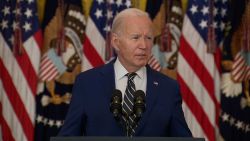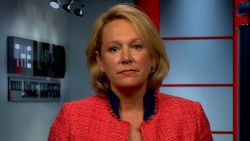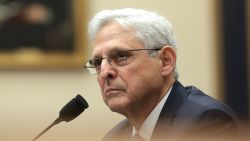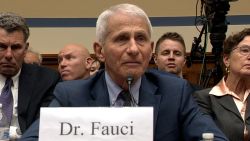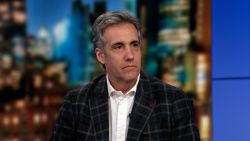Momentary relief was met with the stark reality Friday that President Donald Trump is not nearly done with his chaotic tariff regimen.
In remarks to reporters from the Oval Office on Friday, Trump said he will announce new so-called reciprocal tariffs next week, perhaps fulfilling a campaign pledge and a long-held desire to match foreign countries’ import taxes dollar-for-dollar to restore what the president believes is fairness to international trade.
That statement shook financial markets Friday after what had been a relatively quiet week for stocks. Although Trump’s 10% across-the-board tariffs on China went into effect Tuesday, and China retaliated against the United States with expanded tariffs of its own, markets rose a bit this week on relief that Trump pushed back plans for 25% tariffs on all goods coming in from Mexico and Canada.
Friday’s announcement of new potential tariffs that could hit all corners of the world rattled investors. The Dow Jones Industrial Average fell 400 points, or 0.9%. The broader S&P 500 also fell 0.9% and the tech-heavy Nasdaq Composite Index was 1.4% lower.
Trump said reciprocal tariffs would ensure “that we’re treated evenly with other countries” and could help reduce America’s budget deficit. Tariffs have served as a key part of Trump’s pledge to raise revenue to pay for the extension of his 2017 tax cut on top of other promised tax cuts. But the tariffs themselves could represent an enormous tax hike on American consumers, who economists say ultimately pay the cost of tariffs.
If Trump goes forward with the 25% tariffs on Mexico and Canada that were pushed back until March 1, the total direct cost of the import taxes on Chinese, Mexican and Canadian goods would amount to a tax hike of more than $1,200 per year for the typical American household, Peterson Institute researchers have found. That would amount to the largest US tax increase since at least 1993, the researchers added. Even if those 2017 tax cuts are extended, the Peterson Institute analysis found that the bottom 60% of earners would still “end up significantly worse off” because of the tariffs.
Reciprocal tariffs could add significantly more to that bill.
It’s not clear what form reciprocal tariffs would take, if they’re enacted at all. Trump had recently threatened an across-the-board 10% tariff on all imports coming into the United States. But Trump’s threat of reciprocal tariffs appears to return to a frequent campaign refrain that matching foreign nations’ import taxes dollar-for-dollar could help reduce US trade deficits.
Trade gaps measure the difference between the value of goods America imports and the value of goods America exports to and from a foreign nation. Trump has railed against what he views as unfair trade arrangements, incorrectly saying America’s trade gaps with foreign nations show the United States is “losing” hundreds of billions of dollars to its neighboring nations. Some economists caution that Trump’s language about America’s trade gap presents an unfair representation of what has become a crucial mechanism for the US economy — its ability to purchase services offered by other countries as well as stuff that isn’t made here much, like coffee.
If Trump moves forward with reciprocal tariffs, it could prompt a series of retaliatory tariffs from impacted nations. That could ignite a trade war, prompting ever-higher taxes that ultimately hurt consumers, who economists note typically get stuck with the bill at the end. That’s because American importers pay tariffs – not the foreign countries targeted with tariffs. Those importers pass the costs on to retailers, which typically raise consumer prices in turn.
The 10% tariff on China is a tax on about $427 billion worth of goods. That already exceeds the various tariffs Trump imposed during his first administration on roughly $380 billion of foreign goods, according to estimates from the Tax Foundation.
But the Trump administration also delayed some of those tariffs Friday, temporarily restoring the so-called de minimis exemption: a loophole that allows packages worth less than $800 to enter the country duty-free. The exemption had gone into place Tuesday, and the US Postal Service quickly halted all package deliveries from China and Hong Kong to comply with the order.
But then USPS restored service within hours, adding to confusion about how items from China would be inspected to determine their import taxes. Trump signed an executive action Friday that restored the de minimis exemption until “adequate systems are in place to fully and expediently process and collect tariff revenue” at the Commerce Department.
The executive order did not say how long the delay would last. It was yet another example of uncertainty surrounding the implementation and scope of potential tariffs that may or may not be coming soon.
CNN’s Matt Egan, Elisabeth Buchwald and Ramishah Maruf contributed to this report.



